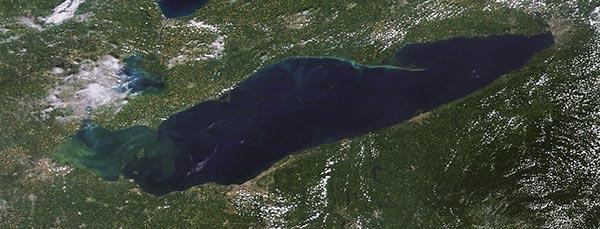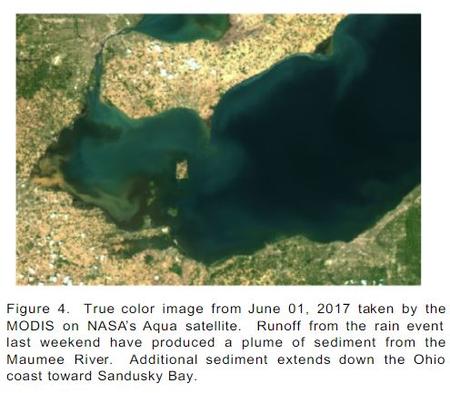Lake Erie Algae Bloom Could Worsen This Year
May rains wash algae-feeding phosphorus into Maumee River.

A harmful algal bloom in western Lake Erie produced a toxin that shut down Toledo’s water supply in 2014. The size and severity of the bloom varies from year to year, depending on how much phosphorus enters the water and feeds algae. The National Oceanic and Atmospheric Administration says heavy rain in May washed a large amount of phosphorus into the Maumee River, which flows into the lake. Because of that, NOAA Oceanographer Richard Stumpf says this year’s growth could be worse than usual.
“We’re not looking at a mild bloom year,” Stumpf says.

Harmful algal blooms are rated on a scale of 1 to 10, with the 2011 event being the worst (10). Stumpf predicts this year’s bloom could be as high as an 8.
Much of the phosphorus that contributes to algae growth comes from fertilizer spread on farmland. Rain washes chemicals into streams and finds its way to rivers and, eventually, the lake. Stumpf says it’s important to reduce the amount of farm runoff.
“The key issue is getting the concentration of phosphorus down,” Stumpf says. “If we reduce that, then every gallon of water that comes off a farm field will have less phosphorus, and we’ll end up with a smaller load.”
Ohio has taken steps to reduce farm runoff, such as banning farmers from spreading manure on frozen fields in the winter. Besides phosphorus, Stumpf and other scientists closely watch for signs of microcystin, the toxin that polluted Toledo’s water supply in 2014. The poison is produced by bacteria called microcystis, which thrive in warm, stagnant bodies of water. The Centers for Disease Control and Prevention says microcystin can cause liver or kidney damage in humans if ingested. It can also irritate skin and contaminate fish. Stumpf says a large bloom does not necessarily mean a toxic one. But he says beach-goers shouldn’t go into the lake if it’s obviously discolored or there’s scum on the surface.
“I should also say that if you have pets, they should stay out of the water,” Stumpf says.
The City of Toledo says it tests water regularly for the presence of microcystins and other toxins in its water intake crib in Lake Erie. As of June 9, the water was considered clear of toxins. The city has a water quality dashboard on its web site.
Lake Erie Algae Bloom Projection by WDET 101.9 FM on Scribd
